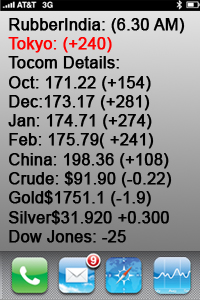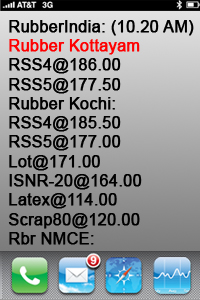
June 27, 2025
Rubber India
Overview
Today, Japanese rubber futures are on track for a weekly gain, largely driven by rising oil prices and a strong performance in the Nikkei index. This positive momentum is helping to offset concerns about potential supply increases from Thailand, a major rubber producer.
Market Highlights
Japanese Rubber Futures
Osaka Exchange: The December delivery rubber contract rose by 5 yen, or 1.66%, closing at 306.7 yen ($2.13) per kg.
Weekly Gain: The contract has increased by 3.76% this week.
Shanghai Futures
September Delivery: The rubber contract on the Shanghai Futures Exchange climbed by 220 yuan, or 1.58%, reaching 14,105 yuan ($1,966.84) per metric ton.
Butadiene Rubber: The July butadiene rubber contract also saw a rise of 155 yuan, or 1.4%, to 11,245 yuan per metric ton.
Singapore Exchange
The front-month rubber contract for July delivery last traded at 160.8 U.S. cents per kg, down by 1.3%.
Influencing Factors
Oil Prices
Oil prices have increased, driven by higher fuel demand in the U.S., despite easing concerns over supply risks in the Middle East.
Natural rubber prices are influenced by oil prices since rubber competes with synthetic alternatives made from crude oil.
Market Sentiment
The Nikkei index rose by 1.5% on Thursday, surpassing the 40,000 mark for the first time since January 27, boosting market confidence.
Supply Concerns
There are concerns about increased supply from Thailand, where heavy rains and floods were forecasted from June 24-27.
Chinese factories are planning to directly purchase 300 tons of rubber from Thai farmers, which will benefit from a tariff reduction from 20% to zero.
Demand Projections
According to the Association of Natural Rubber Producing Countries (ANRPC), global natural rubber production is expected to grow modestly by 0.5% in 2025 compared to 2024.
Demand for natural rubber is projected to increase at a rate of 1.3% in 2025.
Conclusion
The natural rubber market is experiencing positive momentum due to rising oil prices and a strong stock market performance. Supply concerns from Thailand and the impact of weather conditions could influence future market trends. The outlook remains cautiously optimistic with modest growth expected in both production and demand for natural rubber in 2025





